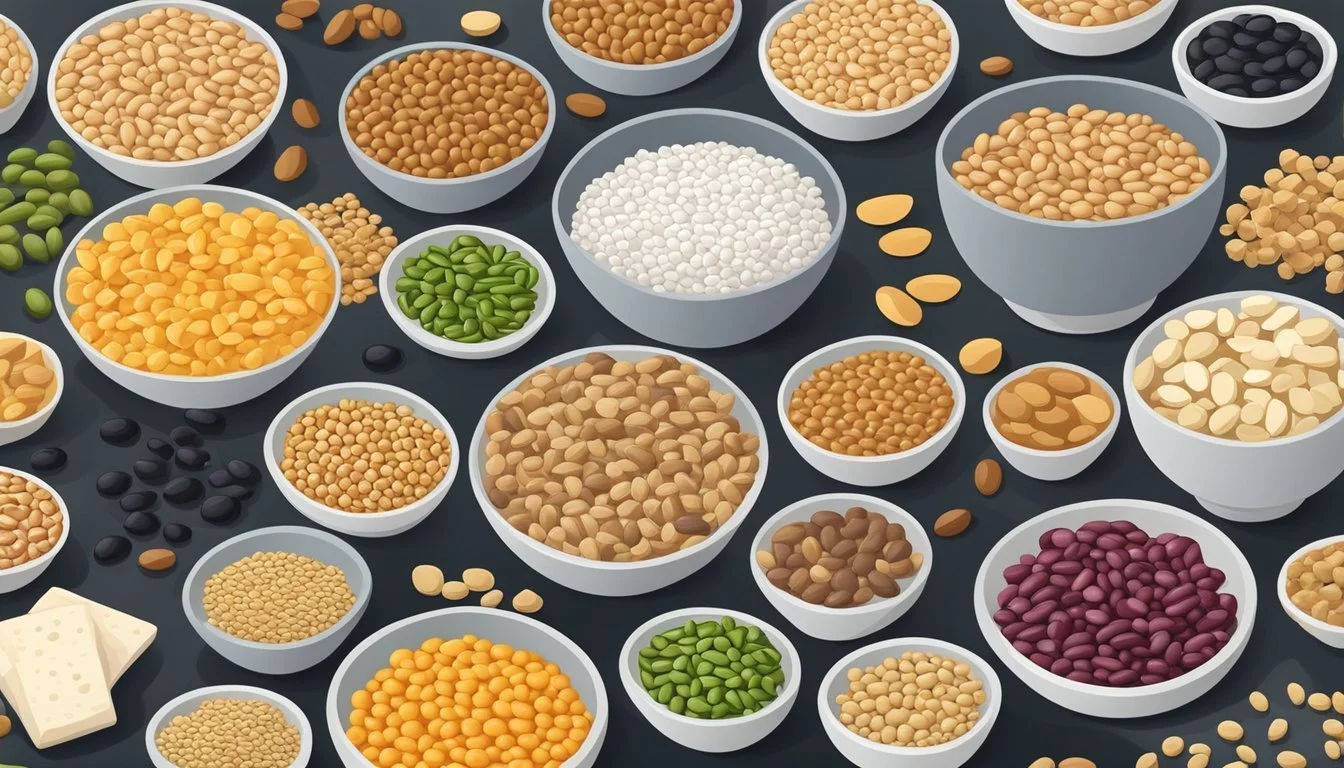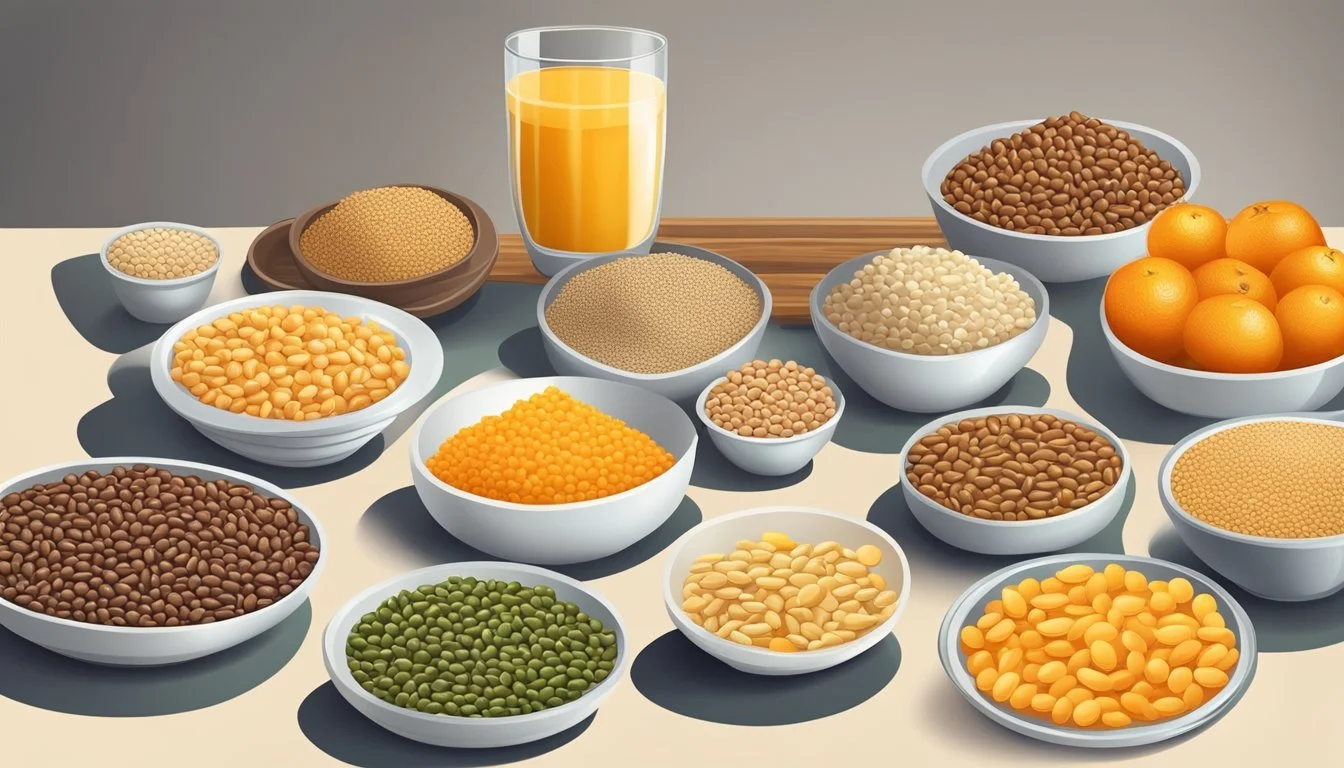How Can I Get Enough Iron If I'm Lactose Intolerant
Strategies for a Balanced Diet
Individuals with lactose intolerance lack the sufficient levels of lactase, the enzyme required to digest lactose, which is the sugar found in milk and other dairy products. The condition can lead to uncomfortable symptoms such as bloating, gas, diarrhea, and abdominal cramps after the consumption of dairy. It is crucial for those with lactose intolerance to find alternative sources of essential nutrients typically abundant in dairy, such as calcium and vitamin D, to maintain a balanced diet.
Iron, another vital nutrient, is one such concern for individuals with lactose intolerance, particularly because some might mistakenly believe that significant sources of iron are limited to dairy products. However, iron can be found in a variety of foods, including both animal and plant sources. Meat, poultry, and fish are excellent sources of heme iron, which is more readily absorbed by the body compared to non-heme iron found in plant-based sources. For those who follow a vegetarian or vegan diet, or simply prefer to limit their intake of meat, options such as lentils, beans, fortified cereals, whole grains, nuts, seeds, and certain vegetables can help fulfill their daily iron requirements.
Moreover, the absorption of non-heme iron can be enhanced by the presence of vitamin C-rich foods in the same meal, such as citrus fruits, strawberries, bell peppers, and tomatoes. It's also worth noting that some factors inhibit iron absorption, such as the phytic acid present in certain whole grains and legumes, tea, coffee, and calcium-rich foods or supplements. Therefore, managing these factors and considering iron supplements, under a healthcare provider's guidance, may be necessary if achieving adequate iron levels through diet alone poses a challenge for those with lactose intolerance.
Understanding Lactose Intolerance
Lactose intolerance stems from the body's inability to digest lactose, a sugar found in dairy products, due to a deficiency in the enzyme lactase. This condition can lead to uncomfortable symptoms upon consumption of dairy, and it is important to distinguish between its primary and secondary forms and understand the potential health concerns associated with each.
Defining Lactose Intolerance
Lactose intolerance occurs when the small intestine does not produce enough lactase enzyme to break down lactose, the sugar found in dairy products. This condition leads to undigested lactose passing into the colon where it gets fermented by bacteria, causing gastrointestinal symptoms.
Symptoms and Diagnosis
Individuals with lactose intolerance may experience symptoms such as diarrhea, gas, and bloating after consuming dairy products. A doctor can diagnose lactose intolerance through a hydrogen breath test, which measures the amount of hydrogen in the breath after the patient drinks a lactose-containing liquid. A rise in hydrogen levels indicates lactose malabsorption.
Primary Vs. Secondary Lactose Intolerance
Primary lactose intolerance is the most common type and is genetically predisposed, particularly among Asian and African populations. It results from a gradual decline in lactase production after weaning. In contrast, secondary lactose intolerance is the result of illnesses or injuries affecting the small intestine, which can temporarily reduce lactase production.
Associated Health Concerns
A key concern for those with lactose intolerance is maintaining adequate calcium and vitamin D levels for bone health, as dairy products are major sources of these nutrients. Individuals with this condition must ensure they consume enough calcium and vitamin D from other sources to prevent a deficiency and associated bone-related health issues.
Iron Nutrition Basics
Iron is a critical nutrient integral to various bodily functions, including oxygen transport and energy production. Individuals need to ensure their diet provides sufficient iron to prevent deficiencies.
Importance of Iron in the Diet
Iron serves as an essential component of hemoglobin, the protein in red blood cells responsible for carrying oxygen throughout the body. It is also pivotal for muscle function, brain development, and the immune system. Without adequate iron, one might experience fatigue, weakened immunity, and impaired cognitive function.
Recommended Iron Intake
The recommended dietary allowance (RDA) for iron varies depending on age, sex, and life stage. Adult men generally require 8 mg per day, while women aged 19-50 need 18 mg per day, with an increase to 27 mg during pregnancy. Lactose-intolerant individuals can obtain their iron from lactose-free food sources:
Animal-based iron sources (heme iron): This type of iron is more readily absorbed by the body and can be found in meats such as lamb, beef, and chicken.
Plant-based iron sources (non-heme iron): Sources include lentils, chickpeas, fortified cereals, and dark leafy greens like spinach and kale.
Combining non-heme iron with vitamin C-rich foods: This combination enhances iron absorption. Foods rich in vitamin C include bell peppers, broccoli, and oranges.
One may seek guidance from a dietitian to develop an individualized plan to meet their iron needs through diet alone or with supplements if necessary.
Non-Dairy Sources of Iron
Individuals who are lactose intolerant require alternative iron sources to maintain adequate iron levels. This can be achieved through a careful selection of foods and understanding the factors that enhance iron absorption.
Iron-Rich Foods
A variety of iron-rich foods can help maintain healthy iron levels. These include:
Seafood: Sardines and salmon are excellent sources of iron.
Legumes: Foods like lentils, chickpeas, and beans offer significant amounts of iron.
Nuts and Seeds: Almonds, cashews, and sunflower seeds are nutrient-dense options.
Vegetables: Dark leafy greens such as spinach, kale, and broccoli are beneficial.
Protein-rich Foods: Eggs and tofu, in addition to being great protein sources, also contribute to iron intake.
The inclusion of these iron-rich foods in one's diet is crucial for those with lactose intolerance to ensure they do not become deficient in this important mineral.
Iron Absorption Enhancers
Enhancing the absorption of iron is as important as its intake. Vitamin C is known to significantly boost the body's ability to absorb iron. Consuming vitamin C-rich foods like oranges, strawberries, and bell peppers alongside iron-rich foods can optimize iron uptake. It is also advisable to include foods high in vitamin C in meals to improve non-heme iron absorption from plant sources.
Dealing With Dietary Restrictions
Those who are lactose intolerant often need to navigate dietary restrictions carefully to ensure they get adequate iron without consuming dairy. Knowledge of hidden dairy sources, lactose-free alternatives, and supplementation can help maintain a well-balanced diet.
Identifying Hidden Dairy
Individuals with lactose intolerance should scrutinize ingredient lists to identify any hidden sources of dairy. Products such as bread, baked goods, and breakfast cereals, along with less obvious items like salad dressings, snack foods, and processed meats, may contain dairy derivatives like whey, curds, dry milk solids, or lactose.
Lactose-Free Alternatives
There are numerous lactose-free alternatives to traditional dairy products. Soy milk, almond milk, and coconut milk can replace cow's milk. Many stores also offer lactose-free versions of cheese and yogurt. These products are specially formulated to cater to those with lactase deficiency while providing similar nutritional benefits.
Complementing with Supplements
To ensure adequate iron intake, lactose intolerant individuals can complement their diet with calcium supplements and vitamin D supplements, which are essential for iron absorption. Consultation with a doctor or dietitian is recommended before beginning any supplement regimen.
Seeking Professional Advice
A professional, like a dietitian or a doctor, should be consulted when dealing with lactose intolerance and iron needs. They can provide personalized advice which may include prescription options for both lactase enzymes and iron supplements tailored to individual dietary needs.
Reading Food Labels
Vigilance in reading food labels is crucial for those with lactose intolerance. Look for labels stating "lactose-free" or "lactose-reduced" to identify safe options. Also, checking for ingredient lists is essential to avoid inadvertent consumption of lactose-containing ingredients in products like sausage or cakes.
Culinary Tips and Recipes
For individuals managing lactose intolerance, it is important to incorporate iron-rich, dairy-free alternatives into their diet. These alternatives not only provide the necessary nutrients but also enhance the culinary experience.
Cooking Without Dairy
One can explore a range of dairy-free recipes that focus on incorporating iron-rich ingredients. Soups featuring legumes such as lentils, chickpeas, and beans are excellent for iron intake and can be easily made without any dairy products. Grains, including oat and rice, can also serve as a base for these soups, adding texture and additional nutrients. Nut milks, such as almond or cashew milk, provide a creamy consistency and flavor without the need for lactose-containing dairy.
Dairy-Free Iron-Rich Recipe: Spinach and Tofu Curry
Ingredients:
1 Tbsp olive oil
2 cloves garlic, minced
1 inch ginger, finely chopped
1 block of firm tofu, pressed and cubed
2 cups fresh spinach, washed and chopped
1 can of coconut milk
2 Tbsp curry powder
Salt to taste
Lemon juice for serving
Instructions:
In a skillet, heat the olive oil over medium heat. Add garlic and ginger, sauté until fragrant.
Increase the heat to medium-high and add tofu cubes, sauté until they're golden brown.
Stir in the curry powder and cook for another minute.
Pour in the coconut milk, bring the mixture to a simmer, then reduce the heat.
Add the spinach, and cook until it wilts.
Serve the curry with a squeeze of lemon juice for added vitamin C, which aids in iron absorption.
Managing Symptoms and Reactions
When someone with lactose intolerance consumes dairy products, they may experience discomfort. Properly managing these reactions and maintaining health requires both immediate and long-term strategies.
Immediate Response to Intolerance
Individuals with lactose intolerance typically exhibit symptoms such as diarrhea, gas, bloating, nausea, and cramps. These symptoms can appear within 30 minutes to two hours after consuming lactose-containing foods.
To reduce symptoms, one can take lactase supplements before a meal or choose lactose-free products.
If symptoms are severe, a visit to a doctor is advised.
Over-the-counter remedies can help manage gas and bloating.
Probiotics may be beneficial in aiding digestion and managing symptoms of lactose intolerance by balancing the gut flora.
Long-Term Health Management
Managing lactose intolerance over the long term involves dietary adjustments and ensuring adequate nutrient intake, which can be challenging when avoiding dairy products.
Diet plays an essential role. Those affected should be well-versed in identifying 'hidden lactose' in processed foods and choosing suitable alternatives.
Calcium and vitamin D supplementation might be necessary, especially for children and infants, to support bone health.
Some individuals might tolerate small amounts of lactose, and a doctor can help determine the right balance.
Iron absorption needs attention as well, and those intolerant of oral iron may require lower doses or alternative forms of iron supplementation to prevent deficiency without exacerbating symptoms of lactose intolerance.
Conclusion
Individuals with lactose intolerance must find alternative sources of iron, as their dietary restrictions preclude the consumption of traditional dairy products. Fortunately, there are ample non-dairy foods rich in iron, such as:
Legumes: lentils, chickpeas, and beans.
Leafy greens: spinach, kale, and Swiss chard.
Nuts and seeds: pumpkin seeds, cashews, and pine nuts.
Whole grains: quinoa, fortified cereals, and brown rice.
Meats: poultry, fish, and red meat are excellent sources.
One must remember to enhance iron absorption by pairing these foods with vitamin C-rich produce like oranges, strawberries, and bell peppers. Individuals should be cautious of certain foods and substances that can inhibit iron absorption, including tea, coffee, and high-calcium foods.
For those who may need additional support, iron supplements are an option. However, they should only be taken under the guidance of a healthcare provider to avoid excessive iron intake, which can be harmful.
Those with lactose intolerance are encouraged to read food labels diligently to avoid "hidden lactose" and consult with dieticians to ensure they maintain a balanced intake of essential nutrients. Health professionals can provide personalized dietary advice and address concerns about nutrition and lactose intolerance.
By incorporating a varied diet and being mindful of nutrient interactions, people with lactose intolerance can confidently meet their iron needs, ensuring good health and well-being.
References
Mayo Clinic. (n.d.). Iron deficiency anemia. Retrieved from https://www.mayoclinic.org
The Mayo Clinic provides extensive information about iron deficiency anemia, including dietary suggestions and treatment options for individuals needing alternative sources of iron due to lactose intolerance or other dietary restrictions.
National Institutes of Health (NIH). (2019). Iron: Fact Sheet for Health Professionals. Retrieved from https://ods.od.nih.gov
This fact sheet by NIH offers comprehensive data on iron requirements, food sources, and the potential impact of lactose intolerance on iron absorption.
American Society of Hematology (ASH). (2021). Anemia. Retrieved from http://www.hematology.org
ASH is a credible resource for understanding anemia, its causes, and managing the condition, supplying practitioners and patients with evidence-based guidance.
Academy of Nutrition and Dietetics. (2020). Food Sources of Iron. Retrieved from https://www.eatright.org
The Academy of Nutrition and Dietetics lists iron-rich foods, highlighting lactose-free options suitable for individuals with lactose intolerance.
Dietitians of Canada. (2021). Food Sources of Iron. Retrieved from https://www.unlockfood.ca
Dietitians of Canada emphasize the importance of iron in the diet and provide a detailed list of non-dairy iron sources, which is valuable for those who are lactose intolerant.






